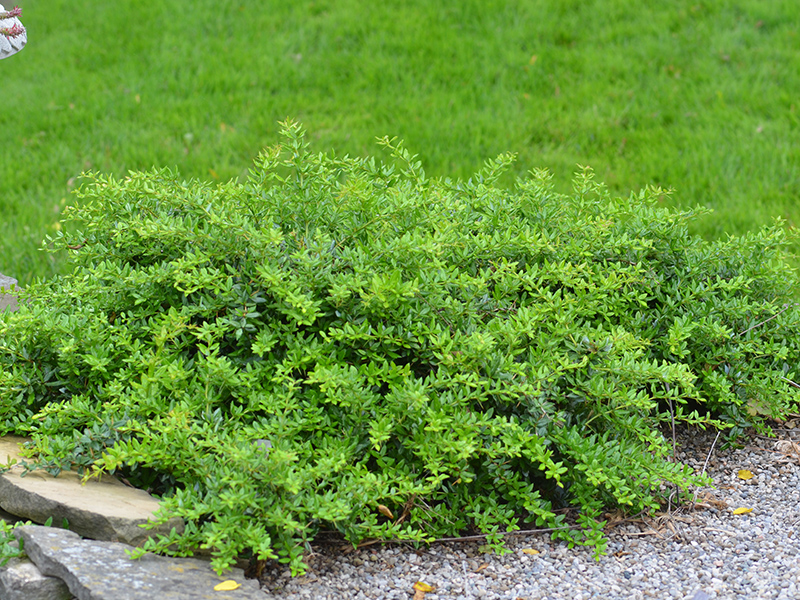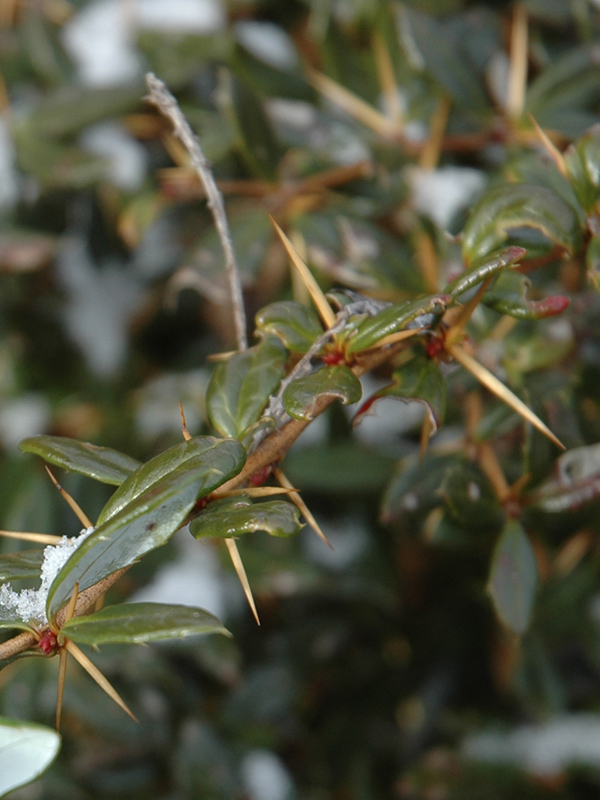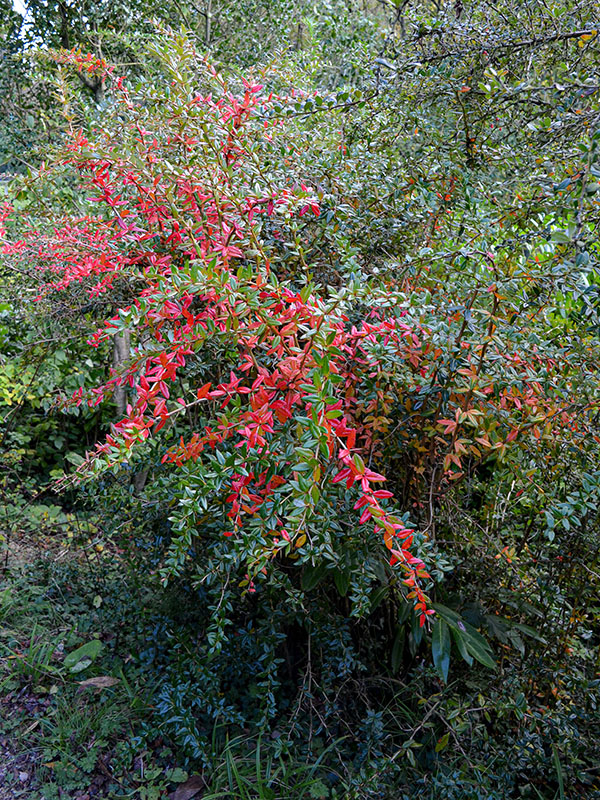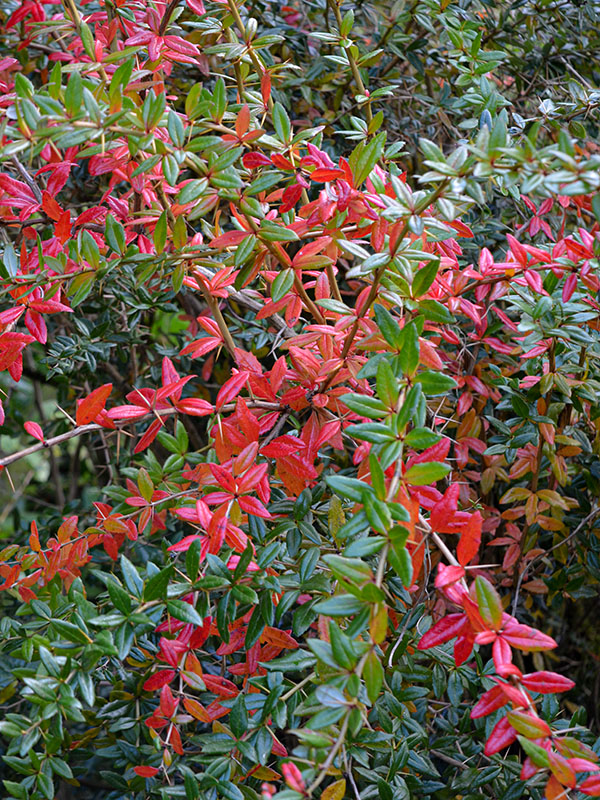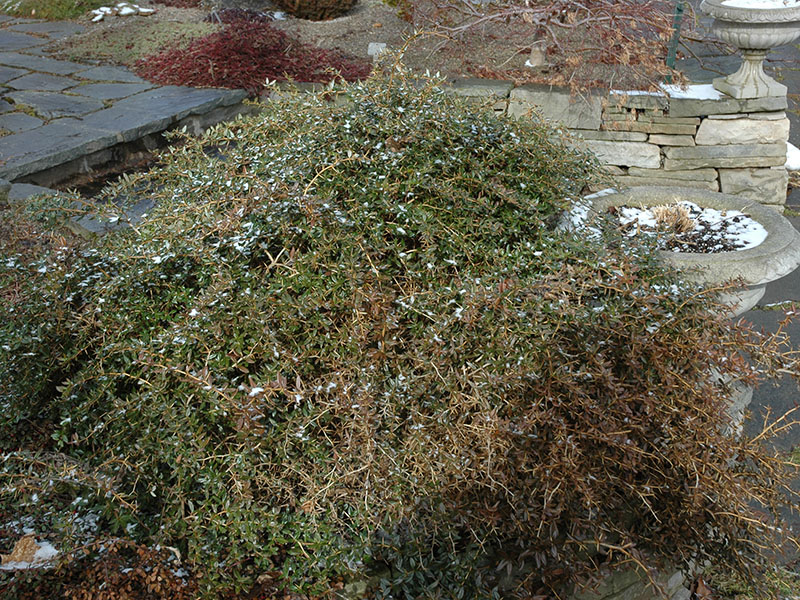
Woody > Berberis > Berberis verruculosa > Berberis verruculosa
Berberis verruculosa
Warted Barberry
Origin: Western Sichuan province of China.
| Family |
| Beberidaceae |
| Genus |
| Berberis |
| Species |
| verruculosa |
| Category |
| Woody |
| Type |
| Shrub (evergreen) |
| Pronunciation |
| USDA Hardiness Zone |
| 5 - 7 |
| Canadian Hardiness Zone |
| 4a - 7a |
| RHS Hardiness Zone |
| H5 - H7 |
| Temperature (°C) |
| -29 - (-12) |
| Temperature (°F) |
| -20 - 10 |
| Height |
| 1- 1.5 m |
| Spread |
| 1- 1.5 m |
Photographs
Description and Growing Information
Flowering Period
| General Description |
| Berberis verruculosa or Warted Barberry is a slow-growing evergreen shrub that can handle rough climates and extreme soil conditions. Throughout history Berberis shoots and roots have been used to make yellow dye. Shoots are spiny with spine-toothed leaves and small golden flowers. Berries are full of vitamin C but not commercially sold due to the extremely thorny bushes. |
| Landscape |
| Not commonly used in garden landscapes. Can be used for small, informal hedges under windows or function as a barrier wall for a small dog. |
| Cultivation |
| Grows best in full sun to partial shade. Extremely resilient to dry soil conditions. Requires little care, only pruning for shaping at the end of summer. Can be prone to severe winter burn in the colder zones. |
| Shape |
| Naturally grows into a loosely rounded shape. Pruning after the flowering period at the end of summer will create a tidier form. |
| Growth |
| Slow |
| ID Characteristic |
| Dark green leaves with silver underside turn slightly purple in the winter. Yellow flowers bloom in the spring. The stem is covered with dense brown warts. Blue and black berries ripen in late summer. |
| Pests |
| May become infected with powdery mildew. |
| Habitat |
| Woods, thickets and rocky soils, thrives in places with well drained soil. |
| Bark/Stem Description |
| Brown with distinctive round bumps on the bark, resembling warts. |
| Leaf Description |
| Up to 2?1 cm, pinnate, simple, alternate and minutely serrated. |
| Flower Description |
| Small, bright yellow, similar to a buttercup flower, solitary or paired. |
| Fruit Description |
| To 1 cm, purple-black. |
| Colour Description |
| Deep, dark green leaves with a silvery underside, yellow flowers and purple-black berries. |
| Texture Description |
| Leathery with warty stems. |
| Notable Specimens |
| The A. M. Cuddy Gardens, Strathroy, Ontario, Canada. Stourhead Gardens, Wiltshire, United Kingdom. |
| Propagation |
| From seed or softwood cuttings taken at the beginning of summer. |
| Ethnobotanical Uses (Disclaimer) |
| The fruit has been used for antibacterial purposes. It can be eaten raw or cooked, but is not grown commercially because of the thorny bushes. It also reported to have anti-tumour properties. |
